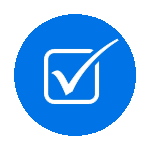Appendix 5A: Identifying Risks and Implementing Controls
Introduction
In Chapter 5, we learned that understanding and managing risks is critical for organizational success and sustainability. This Appendix emphasizes the critical nature, role, and importance of identifying relevant risks and implementing adequate internal controls within various business processes. By exploring matters pertaining to revenues, purchases, inventory, cash, human resources, financial reporting, IT, strategy, and corporate governance, we aim to provide internal auditors with a comprehensive framework to enhance their effectiveness and efficiency.
Risks are inherent in every business process. They represent events or circumstances that could adversely affect an organization’s ability to achieve its objectives. Risks span operational, financial, and compliance domains, among others. Understanding these risks is the first step in safeguarding the organization’s assets and ensuring continuity.
On the other hand, internal controls are mechanisms an organization implements to mitigate these risks. They play a critical role in ensuring the reliability of financial reporting, the effectiveness and efficiency of operations, and compliance with laws and regulations. Internal controls are categorized into preventive, detective, corrective, and accounting controls, each serving a unique purpose in the risk management framework. Here’s a quick recap of the nature of each of these types of controls:
- Preventive Controls aim to deter the occurrence of undesirable events. They are proactive measures, such as authorization procedures and segregation of duties, designed to prevent errors or fraud before they happen.
- Detective Controls are designed to identify and bring attention to errors, fraud, or inefficiencies that have already occurred. Examples include reconciliations, audits, and reviews of system logs.
- Corrective Controls are steps taken to rectify identified errors or irregularities. These controls involve adjusting journal entries, revising operational procedures, and implementing employee training programs.
- Accounting Controls pertain specifically to the accuracy and reliability of an organization’s financial reporting. They include controls over financial statement preparation, transaction recording, and the safeguarding of assets.
Understanding the specific risks and associated controls in each area allows internal auditors to focus their efforts where they matter most. By identifying key risk areas and evaluating the effectiveness of existing controls, auditors can recommend improvements that enhance operational efficiency, financial reliability, and compliance. This reduces the likelihood of adverse events and contributes to the organization’s strategic goals.
In the subsequent sections, let’s dive deeper into some of the most relevant aspects of business functions, information technology, strategy development, and corporate governance and review the relevant risks and controls.
 Learning Objectives
Learning Objectives
By the end of this chapter, you should be able to understand the risks and controls related to
- Procurement
- Sales and revenue
- Human resources
- Financial reporting
- Inventory management
- Information technology
- Cash management
- Capital assets
- Strategy management
- Corporate governance
Procedures and mechanisms implemented to ensure the integrity of financial reporting, compliance with laws, and effective operations.
Controls designed to prevent errors or fraud from occurring in the first place, such as authorization and segregation of duties.
Controls designed to identify and correct errors or fraud that have already occurred, such as reconciliations and audits.
Measures implemented to correct identified issues or deficiencies in internal controls, ensuring that errors or irregularities are addressed and prevented from recurring.
Mechanisms and procedures designed to ensure the accuracy, completeness, and reliability of financial reporting and to safeguard assets.

